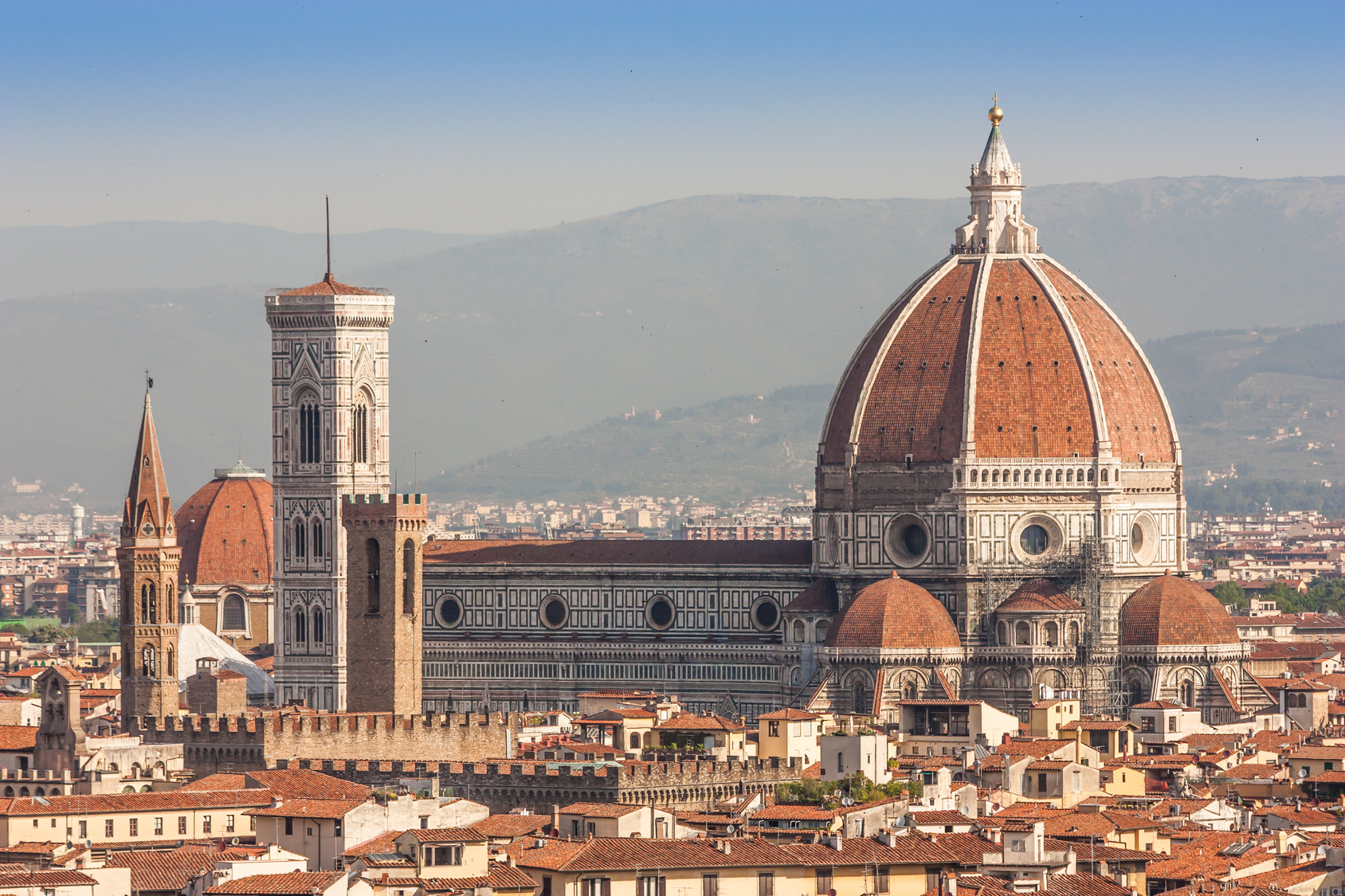Italy is home to a rich historical heritage, offering visitors many iconic sites to explore. Everyone must visit the top 10 historical sites in Italy. From the ancient ruins of Pompeii and the Colosseum to the artistic marvels of Florence and the grandeur of the Vatican City, Italy’s historical sites are an essential part of any traveler’s itinerary.
Each location tells a story, providing a glimpse into the country’s rich past and cultural significance. Whether it’s the romantic charm of Venice or the medieval architecture of Siena, Italy’s historical sites leave a lasting impression on every visitor. With a diverse array of historical landmarks, Italy offers an unforgettable journey through time, showcasing the country’s enduring legacy and influence on the world.
Introduction To Italy’s Rich History
Italy is a land steeped in history, a country that has played a pivotal role in shaping the cultural, political, and architectural landscape of the world. From the grandeur of the Roman Empire to the Renaissance period, Italy’s historical significance is undeniable. This article will take you on a virtual tour of Italy’s top 10 must-visit historical sites, shedding light on the centuries-old marvels that continue to captivate visitors from around the globe.
Brief Overview Of Italy’s Historical Significance
Italy stands as a living testament to the evolution of human civilization, offering a window into the past that few other places can provide. Its historical significance can be traced back to the glory days of the Roman Empire, where the city of Rome emerged as the epicenter of power and influence in the ancient world. The legacy of renowned Roman leaders, awe-inspiring architecture, and intricate mosaics continue to narrate the grandeur of this era.
The subsequent periods of medieval feudalism and the Renaissance further solidified Italy’s stature as a global cultural powerhouse. It was during the Renaissance that artists such as Michelangelo, Leonardo da Vinci, and Raphael transformed Italy into a melting pot of artistic innovation, leaving behind a legacy that continues to inspire and awe visitors to this day.
The Magnificent Colosseum In Rome
The Colosseum, originally known as the Flavian Amphitheatre, is a monumental symbol of ancient Rome. It stands as a testament to the architectural ingenuity and advanced engineering of the Roman Empire. This iconic structure has a rich history that beckons visitors to delve into its captivating past. Its must visit site in Italy.
Unraveling The History Behind The Colosseum
Built in AD 70-80, the Colosseum was a grand amphitheater designed for gladiatorial contests, animal hunts, and public spectacles. It could accommodate over 50,000 spectators, showcasing the grandeur and power of ancient Rome. However, it also holds a darker side, as it served as a site for public executions and mock naval battles.
Must-see Features And Noteworthy Events
The Colosseum boasts impressive architectural features, including its elliptical shape and towering outer walls. Visitors can explore the underground chambers where gladiators and animals awaited their turn in the arena. The amphitheater also witnessed significant events, such as the inaugural games that lasted 100 days and nights, drawing people from all corners of the empire.
The Timeless Beauty Of Pompeii
Pompeii is an ancient city frozen in time, offering visitors a rare glimpse into the daily life of the Roman Empire. The well-preserved ruins provide an immersive experience, where you can walk through the cobbled streets, explore the ancient buildings, and witness the fascinating architecture that has survived for centuries. Exploring Pompeii allows you to step back in time and unravel the mysteries of this once-thriving city.
Unearthing The Daily Life Of Ancient Romans
Venturing through Pompeii’s pathways provides a captivating insight into the daily routines and customs of the ancient Romans. From the remains of lavish villas to the humble homes of commoners, visitors can delve into the cultural practices, social structures, and artistic expressions of this bygone civilization. Unearthing Pompeii’s historical layers enables a deeper appreciation of the rich heritage that shaped this remarkable city.
The Enigmatic City Of Pompeii
The ancient city of Pompeii, nestled at the base of Mount Vesuvius, is a remarkably well-preserved archaeological site that offers a riveting glimpse into the daily life of the Romans. Frozen in time by the catastrophic eruption of the volcano in 79 AD, Pompeii provides an unparalleled opportunity to explore and understand the history, culture, and architecture of the ancient Roman civilization.
Immersing In The Historical Grandeur Of Florence
Art And Architecture That Shaped Italian History
The Splendor Of The Vatican City
Italy is renowned for its rich history, magnificent art, and complex cultural heritage. When exploring the historic wonders of Italy, the Vatican City stands out as an extraordinary destination. With its cultural and religious significance, the Vatican City offers a captivating experience for history enthusiasts. From its awe-inspiring monuments to its unparalleled art collections, a visit to the Vatican City is a journey through centuries of human achievement and spiritual devotion. Its must visit site in Italy.
Delving Into The Cultural And Religious Importance
The Vatican City is an enclave within Rome and is considered the spiritual center of the Catholic Church. It holds a unique place in world history and culture, attracting millions of visitors each year. The city-state is intertwined with religious significance, being the residence of the Pope and housing iconic religious edifices such as St. Peter’s Basilica and the Sistine Chapel. As a testament to its cultural importance, the Vatican City has been recognized as a UNESCO World Heritage site, preserving its invaluable heritage for future generations.
Must-visit Attractions Within The Vatican City
The Vatican Museums, housing an impressive collection of art spanning centuries, are a must-visit for art enthusiasts. Visitors can marvel at masterpieces by renowned artists such as Michelangelo, Raphael, and Leonardo da Vinci. The awe-inspiring frescoes of the Sistine Chapel, including Michelangelo’s renowned ceiling and Last Judgment, offer a profound artistic experience. Its also must visit historical sites in Italy. Additionally, a visit to St. Peter’s Basilica allows for an exploration of its extraordinary architecture and religious significance, including Michelangelo’s Pietà and the impressive dome designed by Bramante and completed by Michelangelo.
The Iconic Leaning Tower Of Pisa
Standing as a testament to both architectural wonder and human error, the Leaning Tower of Pisa has captivated visitors for centuries with its gravity-defying lean. A symbol of both Italy’s rich history and engineering prowess, the tower continues to intrigue and inspire all who set their eyes upon it. Read on to discover the historical significance and architectural intrigue of this iconic landmark.
Unveiling The Architectural Intrigue Of Pisa
The Leaning Tower of Pisa, known as “Torre Pendente” in Italian, has long been a source of fascination for travelers and historians alike. Its distinctive tilt, caused by an unstable foundation, presents a puzzling paradox that has drawn countless curious minds to unlock its secrets. The harmonious blend of Romanesque and Gothic architectural styles is evident in the tower’s intricate design, featuring a series of arched colonnades and exquisite marble facades that adorn its seven levels.
The allure of this architectural wonder lies not only in its lean, but in the unparalleled craftsmanship and attention to detail that went into its construction. The intricate carvings and ornate embellishments speak to the skilled artisans of the medieval era, leaving a legacy of timeless beauty that continues to grace the city of Pisa. Its must visit historical site in Italy.
Historical Significance And Structural Marvel
Beyond its unmistakable tilt, the Leaning Tower of Pisa holds a rich tapestry of historical significance. Built over a span of almost two centuries, the tower stands as a representation of the enduring spirit of the Pisan people, who refused to succumb to the challenges posed by its leaning foundations. The breathtaking views from the top of the tower offer a captivating glimpse into the surrounding Piazza dei Miracoli, where the tower stands alongside the Pisa Cathedral and Baptistery, forming a remarkable ensemble of medieval architecture.
Despite its initial structural flaw, the tower stands as a testament to human resilience and ingenuity, serving as a living testament to the triumph of human resolve over seemingly insurmountable obstacles.
Discovering The Ancient City Of Herculaneum
Exploring The Lesser-known Historical Site
While Pompeii often steals the spotlight, the ancient city of Herculaneum remains a hidden gem, waiting to be explored. Often overshadowed by its more famous neighbor, Herculaneum offers a more intimate and well-preserved look at life in ancient Rome. With fewer crowds and a more compact site, visitors can truly immerse themselves in the captivating history of this lesser-known historical treasure.
Comparisons With Pompeii And Unique Features
When comparing Herculaneum and Pompeii, it becomes evident that both sites offer invaluable insights into ancient Roman life. However, Herculaneum is distinct in its preservation, showcasing intricate mosaics, pristine frescoes, and even intact wooden structures due to the manner in which the city was buried by the eruption of Mount Vesuvius. The smaller size of Herculaneum also allows for a more comprehensive exploration, providing a closer look at the daily lives of its inhabitants.

Credit: www.italyvisa.ae
The Majestic Roman Forum
The Majestic Roman Forum is a must-visit historical site in Italy, offering a captivating journey through the heart of ancient Rome. This iconic landmark embodies the grandeur and historical significance of the Roman Empire, making it an essential destination for history enthusiasts and cultural explorers.
Immersing In The Heart Of Ancient Rome
Stepping into the Roman Forum transports visitors back in time to the bustling center of ancient Rome. The grandeur of the architectural ruins and the remnants of temples, basilicas, and government buildings create an immersive experience that brings the ancient city to life. As you wander through the cobblestone paths, you can envision the buzzing activity that once filled this historical center.
Unveiling The Historical And Political Significance
The Roman Forum holds unparalleled historical and political significance as the epicenter of Roman public life. This site was not only a hub for political and legal affairs but also served as an arena for public speeches, commercial activities, and religious ceremonies. So must visit the top 10 historical sites in Italy.
The Allure Of The Uffizi Gallery In Florence
The Allure of the Uffizi Gallery in Florence
Stepping into the Uffizi Gallery in Florence means embarking on a journey through renowned art and history. This iconic gallery, housed in a 16th-century palace, boasts a breathtaking array of masterpieces, drawing in art enthusiasts and history buffs from around the world.
Journey Through Renowned Art And History
The Uffizi Gallery is a symbol of Italy’s rich cultural history. Its vast collection of paintings and sculptures spans several centuries of artistic achievement. As visitors walk through its halls, they encounter masterpieces by Michelangelo, Leonardo da Vinci, and Raphael. Each artwork reflects the evolution of Italian art and its profound influence on the world. The gallery offers an intimate look at the creative genius of these renowned masters. It is a place where the legacy of Italian art and history is beautifully preserved and celebrated.
Noteworthy Artworks And Historical Context
Within the walls of the Uffizi, visitors encounter an awe-inspiring array of masterpieces, including Botticelli’s iconic “The Birth of Venus” and “Primavera.” Each artwork is steeped in historical context, reflecting the societal, political, and religious influences of the time. These masterpieces serve as windows into the past, allowing visitors to connect with the cultural tapestry of Italy.
Unraveling The Secrets Of Milan’s Duomo
Milan’s Duomo, or the Cathedral of Santa Maria Nascente, stands as one of the most iconic landmarks in Italy. This magnificent structure offers a glimpse into the historical, architectural, and cultural significance of the city.
Exploring The Iconic Cathedral’s Historical Importance
The history of Milan’s Duomo dates back to the late 14th century, with construction spanning over six centuries. During the Renaissance, the cathedral stood as a symbol of Milan’s wealth and influence. Its design reflected the artistic and architectural brilliance of the era. Beyond its beauty, the cathedral holds deep religious importance. As the seat of the Archbishop of Milan, it remains a center of faith and pilgrimage.
Architectural Marvel And Cultural Significance
The Duomo’s intricate design and ornate decorations showcase the artistic talents of renowned sculptors and craftsmen of the era. Its breathtaking stained glass windows, elaborate carvings, and imposing statues demonstrate the fusion of art, faith, and history.
Frequently Asked Questions Of Top 10 Must-visit Historical Sites In Italy
What Are The Top 3 Historical Sites To Visit In Italy?
Italy is home to some incredible historical sites, with the Colosseum in Rome being one of the most iconic. The ruins of Pompeii offer a fascinating glimpse into life during the Roman Empire. The ancient city of Herculaneum, preserved by volcanic ash, is another remarkable site to explore.
These places show what life was like a long time ago and are really interesting for anyone who loves history.
Are There Any Lesser-known Historical Gems In Italy Worth Visiting?
Yes! Beyond the popular landmarks, Italy hides unique gems like the trulli houses in Alberobello and the cave homes of Matera. The Valley of the Temples in Agrigento also offers a stunning glimpse into ancient history. These lesser-known sites are perfect for travelers seeking something off the beaten path.
What Is The Significance Of Italy’s Historical Sites?
Italy’s historical places are very important because they help us understand the country’s past. From ancient times to the Middle Ages, these sites show how Italy has changed over time. They also make Italy one of the most famous countries in the world for history and culture.
Final Thought
Italy’s historical sites are incredible, offering a glimpse into the rich cultural past. From the iconic Colosseum to the stunning ruins of Pompeii, each site tells a unique story. Italy, rich in history, art, and architecture, is a dream destination for history lovers. Be sure to explore the top 10 historical sites to fully appreciate its cultural heritage.
Don’t miss out!




